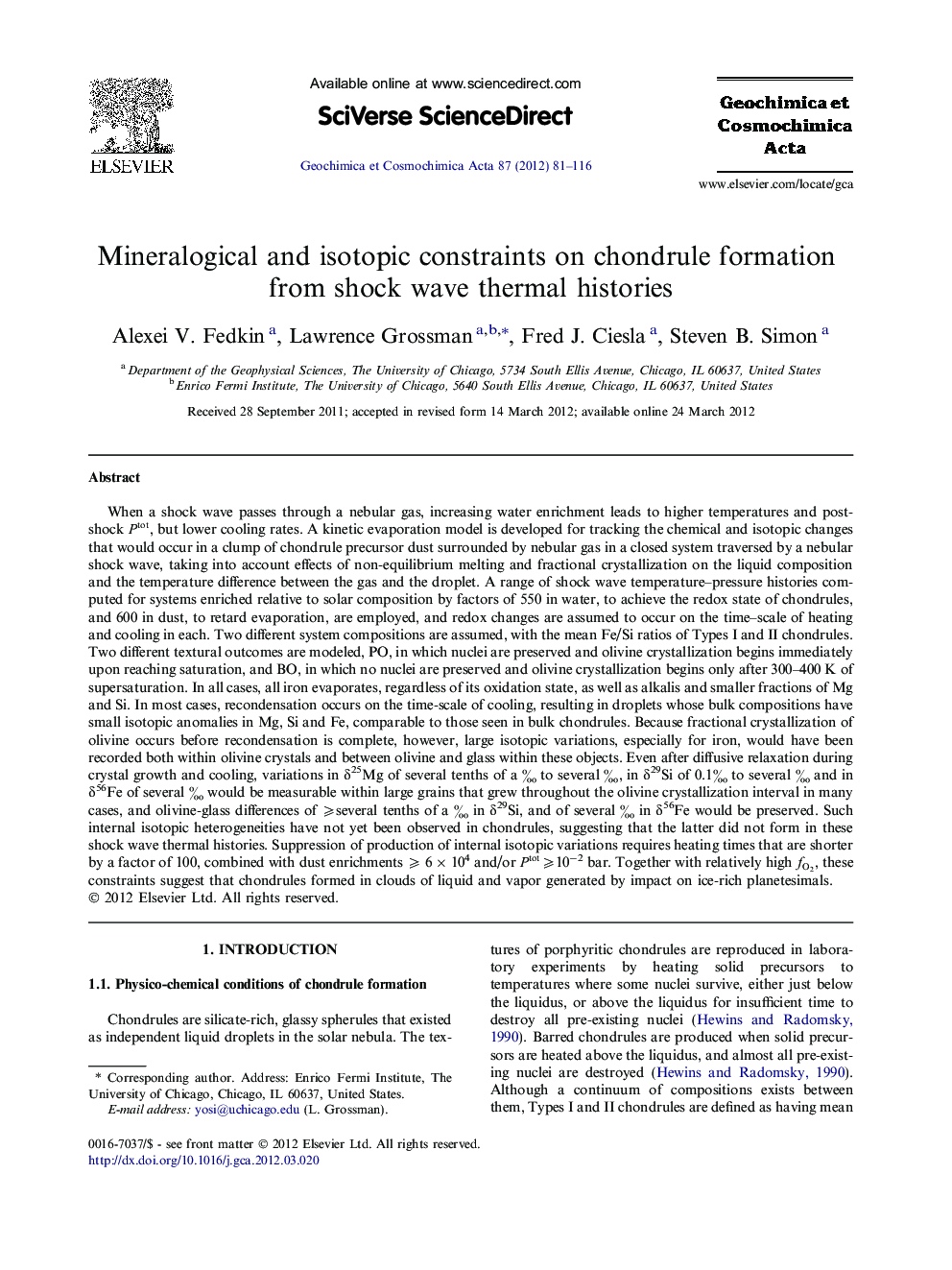| Article ID | Journal | Published Year | Pages | File Type |
|---|---|---|---|---|
| 4702881 | Geochimica et Cosmochimica Acta | 2012 | 36 Pages |
When a shock wave passes through a nebular gas, increasing water enrichment leads to higher temperatures and post-shock PtotPtot, but lower cooling rates. A kinetic evaporation model is developed for tracking the chemical and isotopic changes that would occur in a clump of chondrule precursor dust surrounded by nebular gas in a closed system traversed by a nebular shock wave, taking into account effects of non-equilibrium melting and fractional crystallization on the liquid composition and the temperature difference between the gas and the droplet. A range of shock wave temperature–pressure histories computed for systems enriched relative to solar composition by factors of 550 in water, to achieve the redox state of chondrules, and 600 in dust, to retard evaporation, are employed, and redox changes are assumed to occur on the time–scale of heating and cooling in each. Two different system compositions are assumed, with the mean Fe/Si ratios of Types I and II chondrules. Two different textural outcomes are modeled, PO, in which nuclei are preserved and olivine crystallization begins immediately upon reaching saturation, and BO, in which no nuclei are preserved and olivine crystallization begins only after 300–400 K of supersaturation. In all cases, all iron evaporates, regardless of its oxidation state, as well as alkalis and smaller fractions of Mg and Si. In most cases, recondensation occurs on the time-scale of cooling, resulting in droplets whose bulk compositions have small isotopic anomalies in Mg, Si and Fe, comparable to those seen in bulk chondrules. Because fractional crystallization of olivine occurs before recondensation is complete, however, large isotopic variations, especially for iron, would have been recorded both within olivine crystals and between olivine and glass within these objects. Even after diffusive relaxation during crystal growth and cooling, variations in δ25Mg of several tenths of a ‰ to several ‰, in δ29Si of 0.1‰ to several ‰ and in δ56Fe of several ‰ would be measurable within large grains that grew throughout the olivine crystallization interval in many cases, and olivine-glass differences of ⩾several tenths of a ‰ in δ29Si, and of several ‰ in δ56Fe would be preserved. Such internal isotopic heterogeneities have not yet been observed in chondrules, suggesting that the latter did not form in these shock wave thermal histories. Suppression of production of internal isotopic variations requires heating times that are shorter by a factor of 100, combined with dust enrichments ⩾ 6 × 104 and/or PtotPtot⩾10−2 bar. Together with relatively high fO2fO2, these constraints suggest that chondrules formed in clouds of liquid and vapor generated by impact on ice-rich planetesimals.
